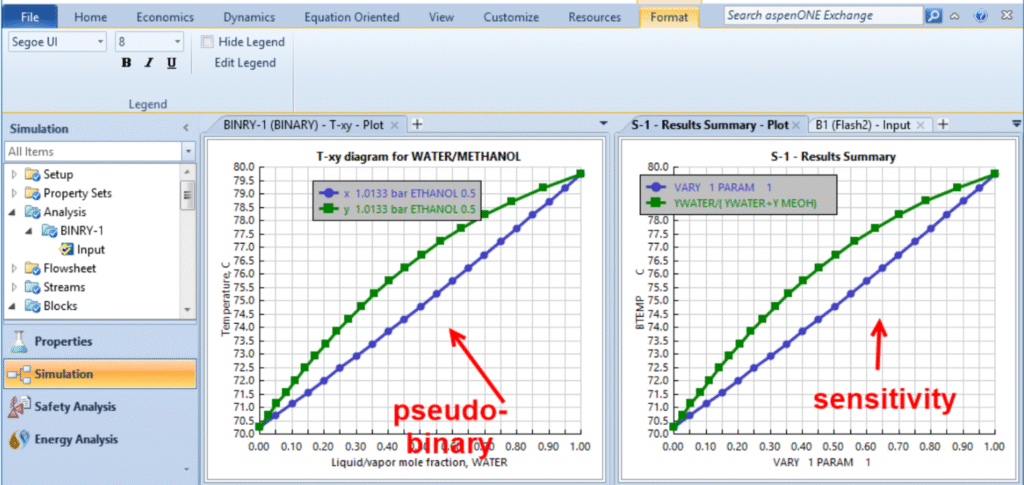Interactive Analysis of Pseudo-Binary Phase Diagrams Using Aspen Plus
Project Description
Interactive property analysis in Aspen Plus enables the generation of pseudo-binary phase diagrams for ternary systems by fixing the entrainer composition and varying the proportions of the two main components. This approach simplifies the calculation of bubble and dew point curves, allowing for clear visualization of phase behavior. The analysis considers mole fraction adjustments of each component and plots the results in terms of composition versus temperature relationships.
Compared to traditional sensitivity-based methods, this technique offers a more streamlined and precise evaluation of thermodynamic interactions. It proves especially valuable in the design and optimization of azeotropic and extractive distillation processes, where accurate phase data is critical for process efficiency and separation performance.
Project Objectives
This project focuses on the generation of pseudo-binary phase diagrams to analyze the phase behavior of ternary mixtures. By fixing the entrainer composition and varying the main component ratios, the system simplifies the assessment of complex thermodynamic interactions.
Visualize phase behavior through bubble and dew point curves for ternary systems.
Improve design efficiency for azeotropic and extractive distillation processes.
Replace sensitivity-based methods with direct interactive property analysis.
Accurately predict vapor-liquid equilibrium in multicomponent mixtures.
Pseudo-Binary Phase Diagram

Project Insights
Phase Behavior Visualization
- Created bubble and dew point curves for ternary systems using fixed entrainer.
- Enhanced clarity of vapor-liquid equilibrium by isolating key binary interactions.
Simulation Strategy
- Used mole fraction relationships to define A and B with entrainer fixed.
- Leveraged flash calculations to dynamically generate phase data.
Process Design Relevance
- Helped identify azeotropic behavior essential for designing effective separation processes.
- Aided solvent selection in extractive distillation by revealing clear composition-phase trends.
Efficiency over Traditional Methods
- Replaced sensitivity analysis with pseudo-binary property calculation.
- Reduced steps while maintaining accurate phase behavior prediction.
Conclusion
The interactive pseudo-binary analysis provides an efficient and insightful method for evaluating phase behavior in ternary systems, particularly when an entrainer is involved. By streamlining the generation of bubble and dew point curves without relying on sensitivity analysis, the approach enhances accuracy and clarity in understanding vapor-liquid equilibrium. This method is especially valuable in designing separation processes like azeotropic and extractive distillation, where precise thermodynamic data is critical for selecting operating conditions and solvents.
